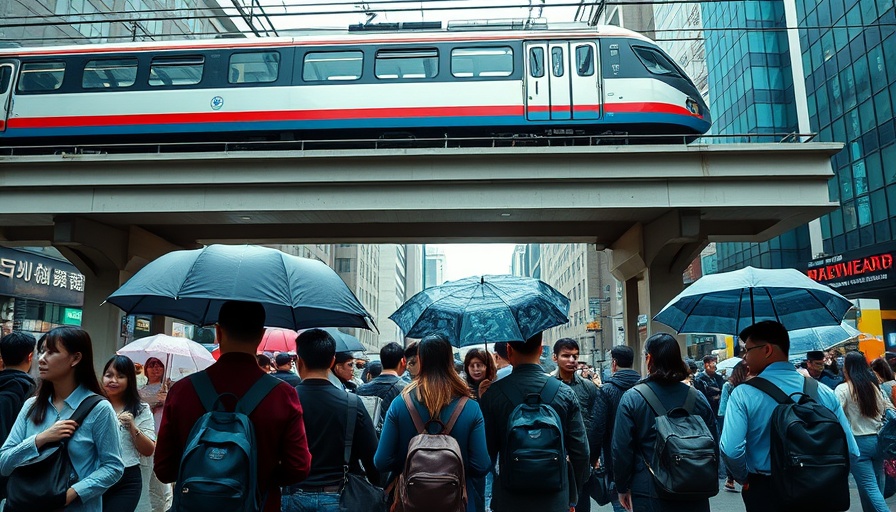
Understanding the Role of Chief Heat Officers in Urban Sustainability
As heatwaves grip cities worldwide, the emergence of chief heat officers has become a pivotal strategy for urban resilience. Eleni Myrivili, a leader in this new wave of urban planning, emphasizes the necessity of proactive measures against rising temperatures. Heat, often referred to as the 'silent killer,' has sparked a global recognition of its lethal impacts; this realization is not just about survival, but also about fostering sustainable urban environments.
Why Is Heat Awareness Finally Gaining Traction?
In the past few years, awareness surrounding the dangers of extreme heat has surged, thanks largely to intense summers that have drawn attention to climate change's immediate effects. Myrivili notes that the narratives surrounding heat have evolved, highlighting its impacts on public health and the importance of intervention. Cities are now prompted to consider not just how to maintain livability in rising temperatures but also how to redesign spaces to improve overall quality of life and sustainability.
Three Pillars of Urban Heat Management
Chief heat officers focus on three main pillars: awareness, preparedness, and redesign. These elements are essential for effective heat management in urban areas. First, raising public awareness is critical. Educating residents about the dangers of heat-related illnesses enables communities—particularly vulnerable populations— to take necessary precautions. Second, preparedness involves creating action plans in advance of heatwaves to ensure systems are in place to mitigate risks. Finally, redesigning urban landscapes can enhance cooling through green infrastructure, like tree canopies and reflective materials.
Innovative Solutions: Redesigning for a Cooler Future
Urban spaces must evolve through sustainable solutions that promote health and environmental stewardship. For instance, integrating green building techniques and clean energy practices into city planning can significantly reduce the carbon footprint of metropolitan areas. Initiatives such as community gardens not only combat urban heat but also promote sustainable agriculture, enhancing local food systems.
The Importance of Inter-city Learning and Collaboration
Myrivili highlights that successful initiatives in one city can serve as models for others. The collaborative exchange of strategies between cities will empower them to implement tailored solutions that resonate with their unique geographical and cultural landscapes. This concept encourages a network of sustainable communities focused on shared experiences and tailored adaptations to climate challenges.
The Future of Urban Heat Management and Climate Action
Looking ahead, Myrivili stresses the urgency for continual adaptation as climate models suggest that extreme heat events will not only persist but intensify, impacting infrastructure and health systems alike. It is clear that cities must act swiftly to address this growing crisis through climate action that prioritizes urban redesign, awareness campaigns, and investment in green technology.
Empowering Communities for Sustainable Living
As awareness grows, civic engagement will play a crucial role in transforming cities into resilient, eco-friendly spaces. Local initiatives, from eco-friendly products to renewable energy sources, require community involvement to fuel momentum. By fostering sustainable practices and environmental conservation within urban settings, citizens become active participants in combatting climate challenges.
Conclusion: Our Role in Creating Sustainable Cities
As we reflect on the words of Eleni Myrivili, it becomes evident that protecting citizens from the dangers of extreme heat requires not only innovative leadership but a collective effort toward a sustainable future. From investing in green initiatives to advocating for ethical consumerism, every action contributes to mitigating the impacts of climate change. Together, we can build cities that not only thrive but also ensure that no one suffers because of the heat we now face.
 Add Row
Add Row  Add
Add 



Write A Comment